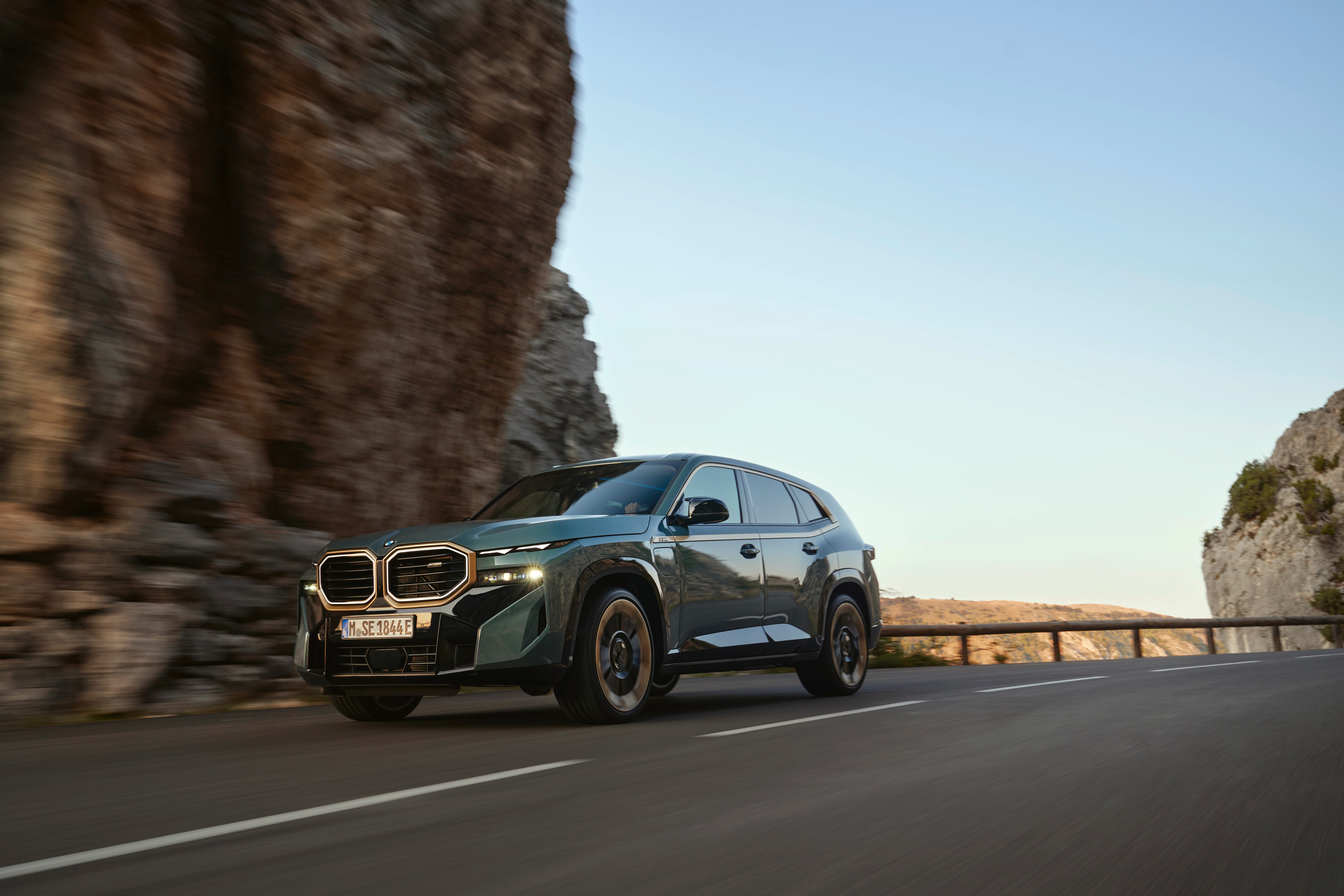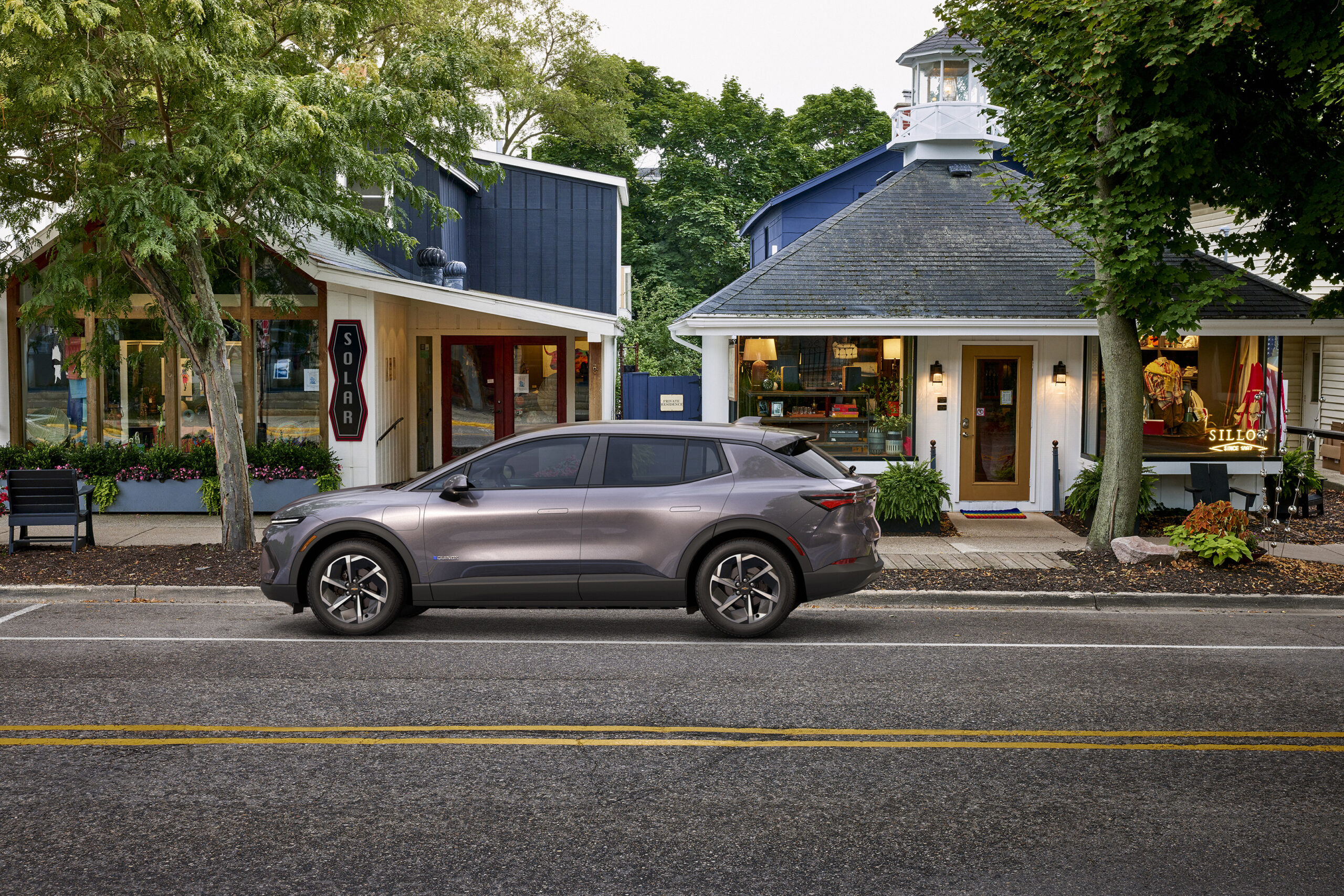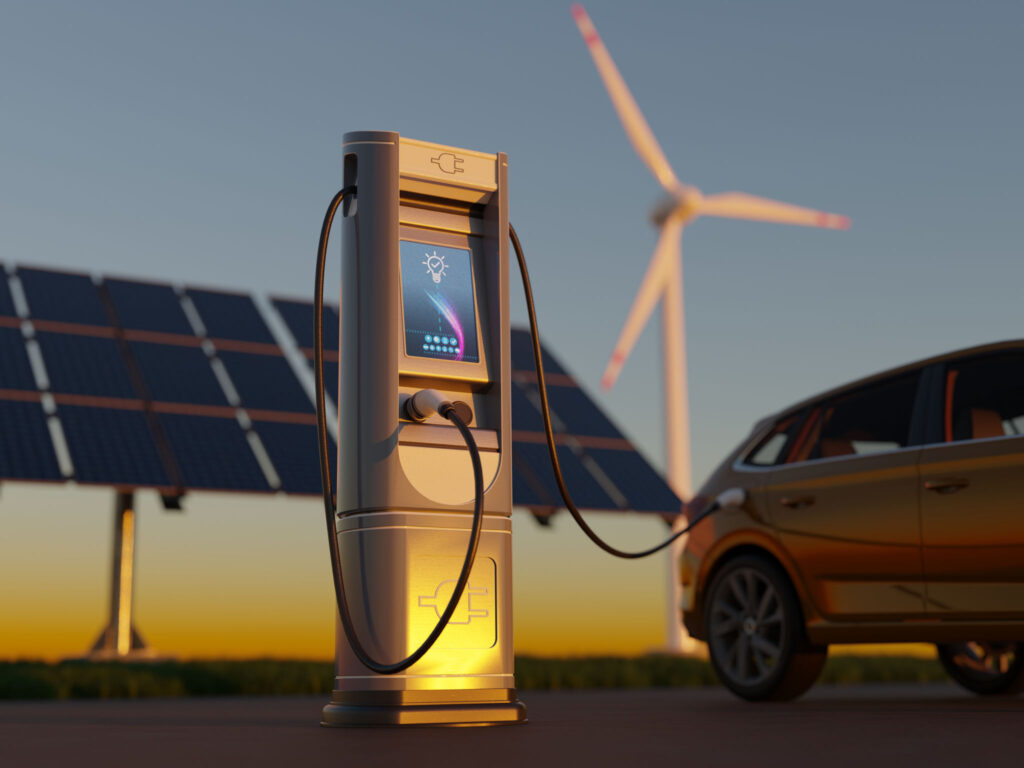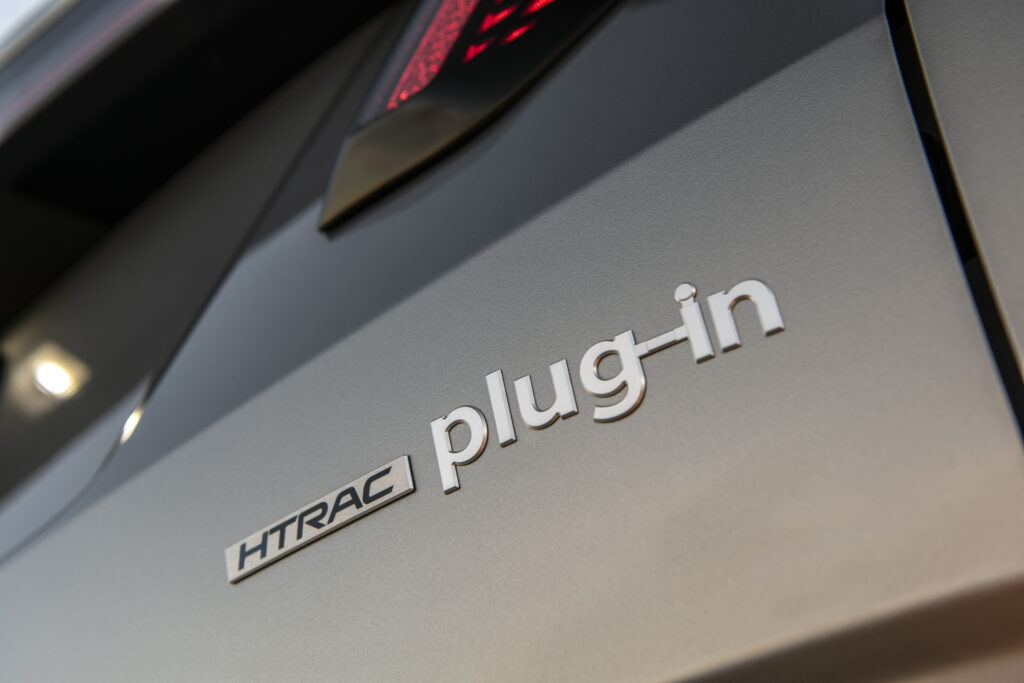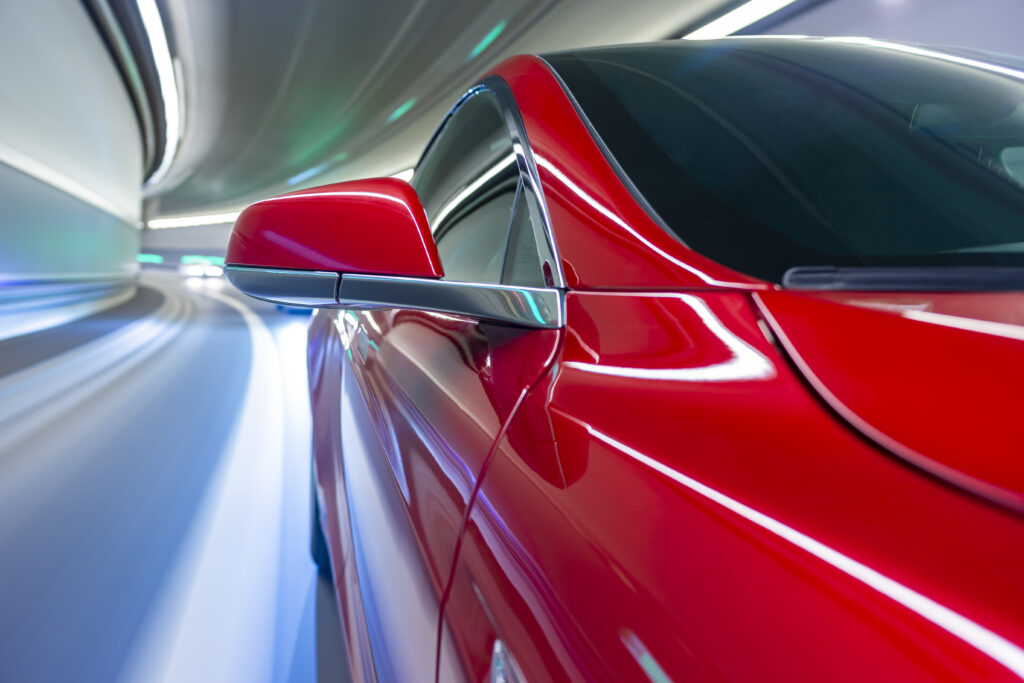
On the surface, sure. But what seems like airtight logic falls apart under scrutiny – because of EVs’ incredible efficiency and because of coal’s fading role in the generation of electricity.
There are fewer and fewer U.S. grids left that rely primarily on coal-fired power. Whereas more than half of states used mostly coal for electricity in 2001, only 15 still do. According to the U.S. Energy Information Administration, nearly a quarter of remaining U.S. coal-fired generating operations have announced plans to shut down.
Coal has been on a long, steady decline as a percentage of all grid fuels in the U.S., falling from about 45% in 2010 to 21% in 2022. During the same period, renewables have doubled, rising from 10% to 20%. Natural gas remains the largest single fuel source for the U.S. grid, and while its share of the mix has expanded in the last 12 years, its growth rate trails that of renewables. Political forces will surely continue to intervene, but the low cost of renewables all but assures the growth of wind, solar and other low-carbon sources at the expense of traditional fuels.
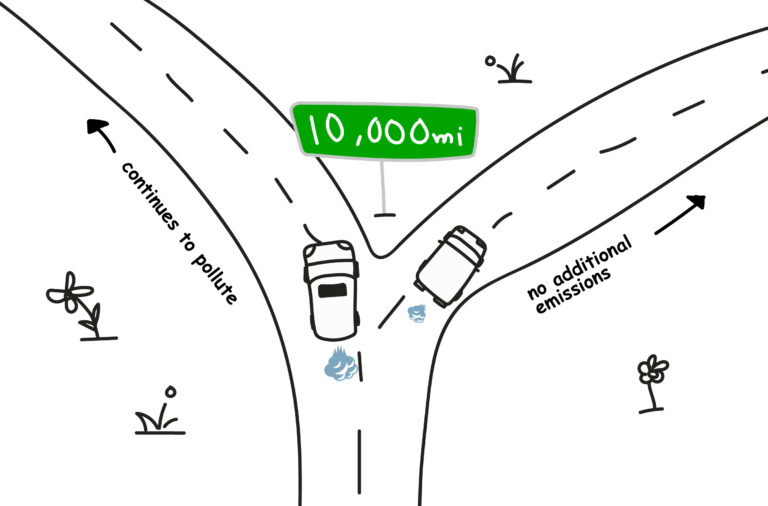
What this means is that once an EV has been on the road a year or two, it has “broken even” with an ICE car in terms of emissions. The ICE continues to add to its lifetime carbon emissions, while the EV barely does.
How is it possible that an EV is cleaner regardless of how its energy is produced? The answer lies in EVs’ profound efficiency advantages over ICE vehicles. No matter the trip, whether you’re puttering around town or rocketing down the Interstate, the EV consumes fuel at a radically lower rate. The slower consumption generates far fewer emissions for each mile driven.
The efficiency differential between EVs and comparable conventional vehicles is extreme.
The compact Honda Civic, long celebrated as a champion of thrift, averages 36 MPG, according to the EPA. The Tesla Model 3, an electric sedan similar in size to the Civic, delivers the equivalent of 132 MPG (expressed by the EPA as MPG-equivalent, or MPGe).
That's a whopping 367% efficiency advantage over the miserly Honda.
In case you’re thinking the Tesla might be an outlier, there are 17 EV models available in the U.S. that deliver economy above 100 MPGe, with six achieving 120 MPGe or better and two exceeding 130. No gas-powered vehicle comes close. The Hyundai Ionic Blue hybrid, the current efficiency champion among fossil-fueled vehicles, rings in at 59 MPG. This means that while a gallon of gas gets an Ioniq Blue 59 miles, the same amount of energy gets most EVs 100 miles.
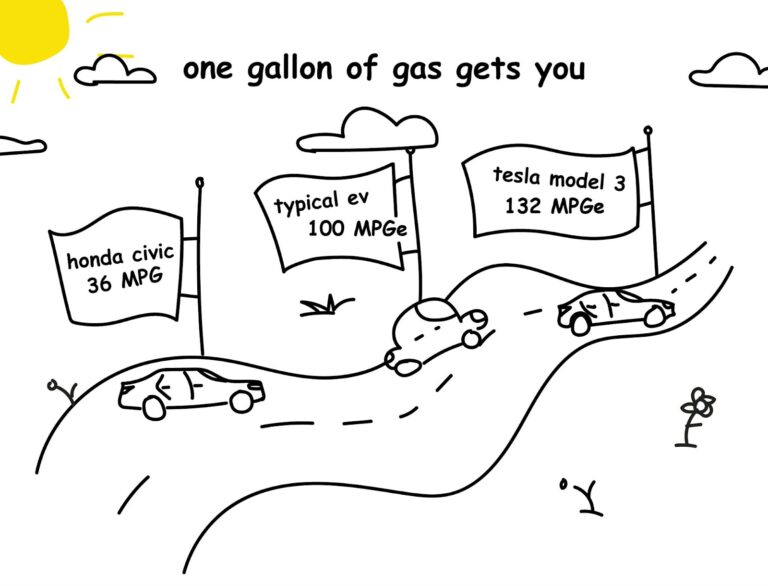
A study by the International Council on Clean Transportation found that “battery electric vehicles (BEVs) have by far the lowest life-cycle [greenhouse gas] emissions. Emissions over the lifetime of average medium-size BEVs registered today are already lower than comparable gasoline cars by 66%–69% in Europe, 60%–68% in the United States, 37%–45% in China, and 19%–34% in India.” The difference between emissions savings in different regions comes down to how dirty it is to produce energy in each of those places.
The ICCT study concludes that “…as the electricity mix continues to decarbonize, the life-cycle emissions gap between BEVs and gasoline vehicles increases substantially,” and that EVs entirely powered by renewable energy would correspond to 81% lower lifecycle GHG emissions than gasoline cars.
Coal-powered EVs? The point is nearly moot.
Visit Recurrent to learn more about electric vehicle battery health.
This article is originally researched and written by the team at Recurrent.
AAA’s Recommendation: Whether you own an electric vehicle or a gas-powered car is up to you – and you should consider lots of factors in making that choice. No matter what type of vehicle you’re choosing, we recommend visiting a dealership, test driving one, and asking as many questions as possible to make an informed decision.










